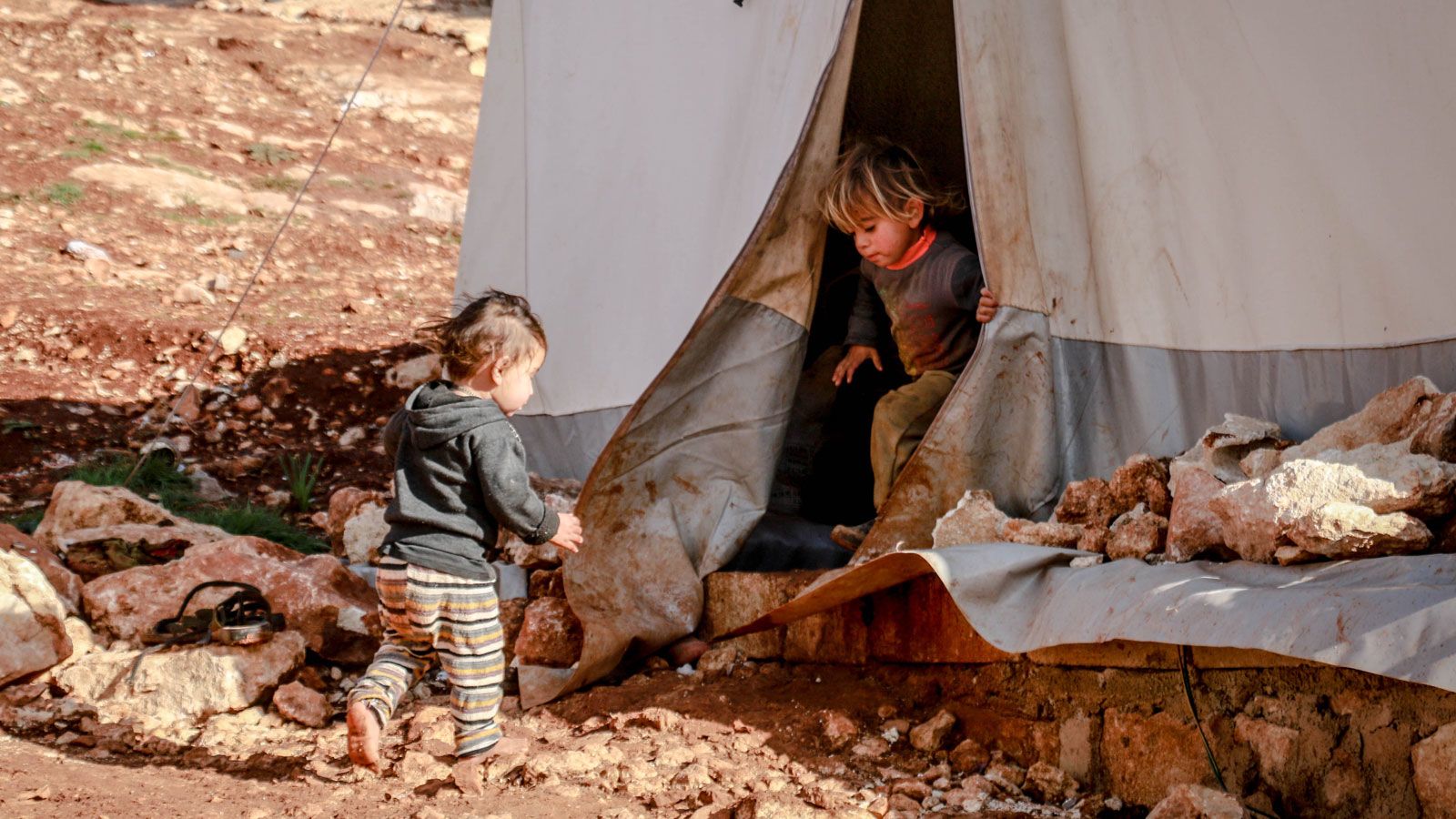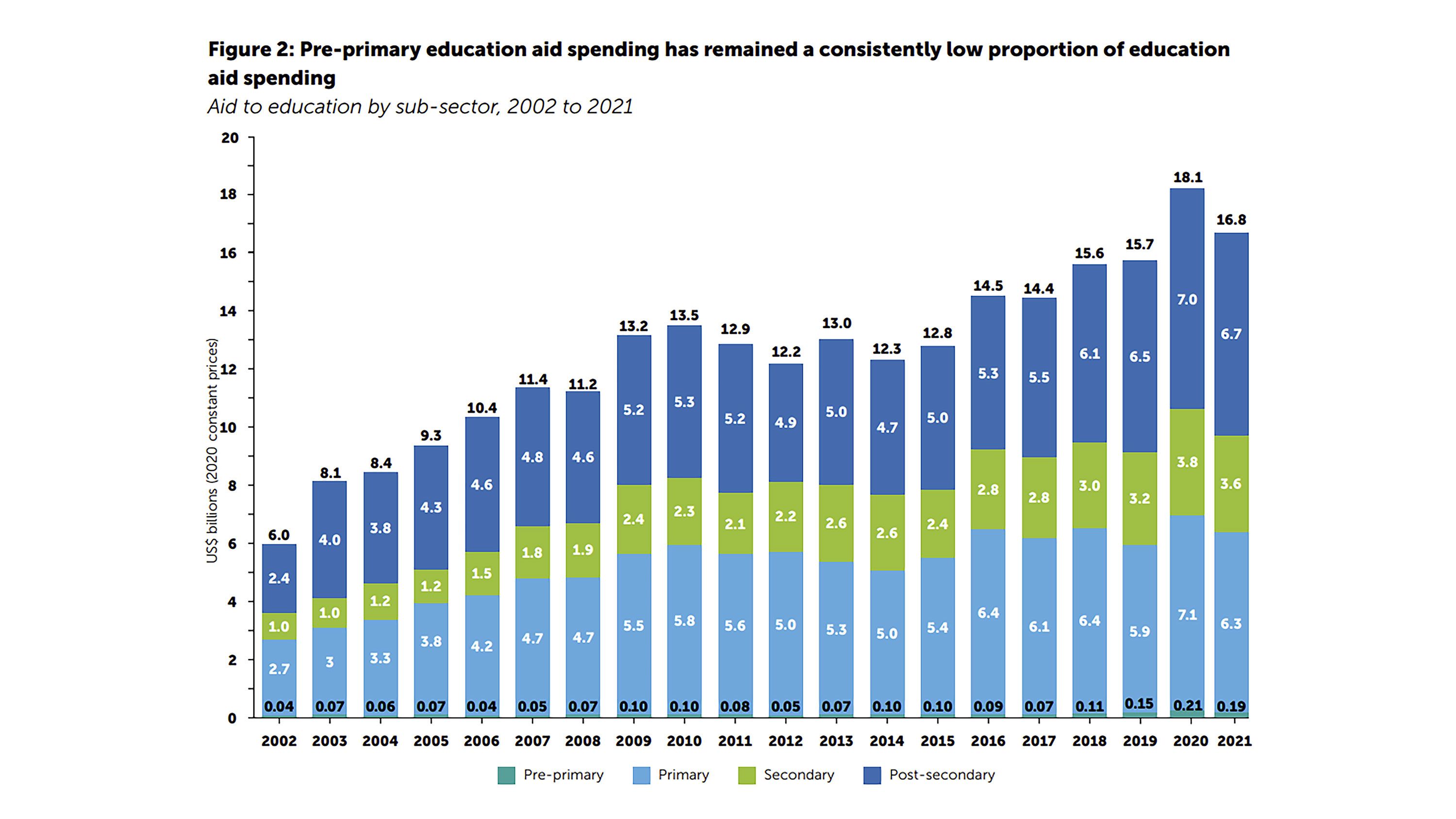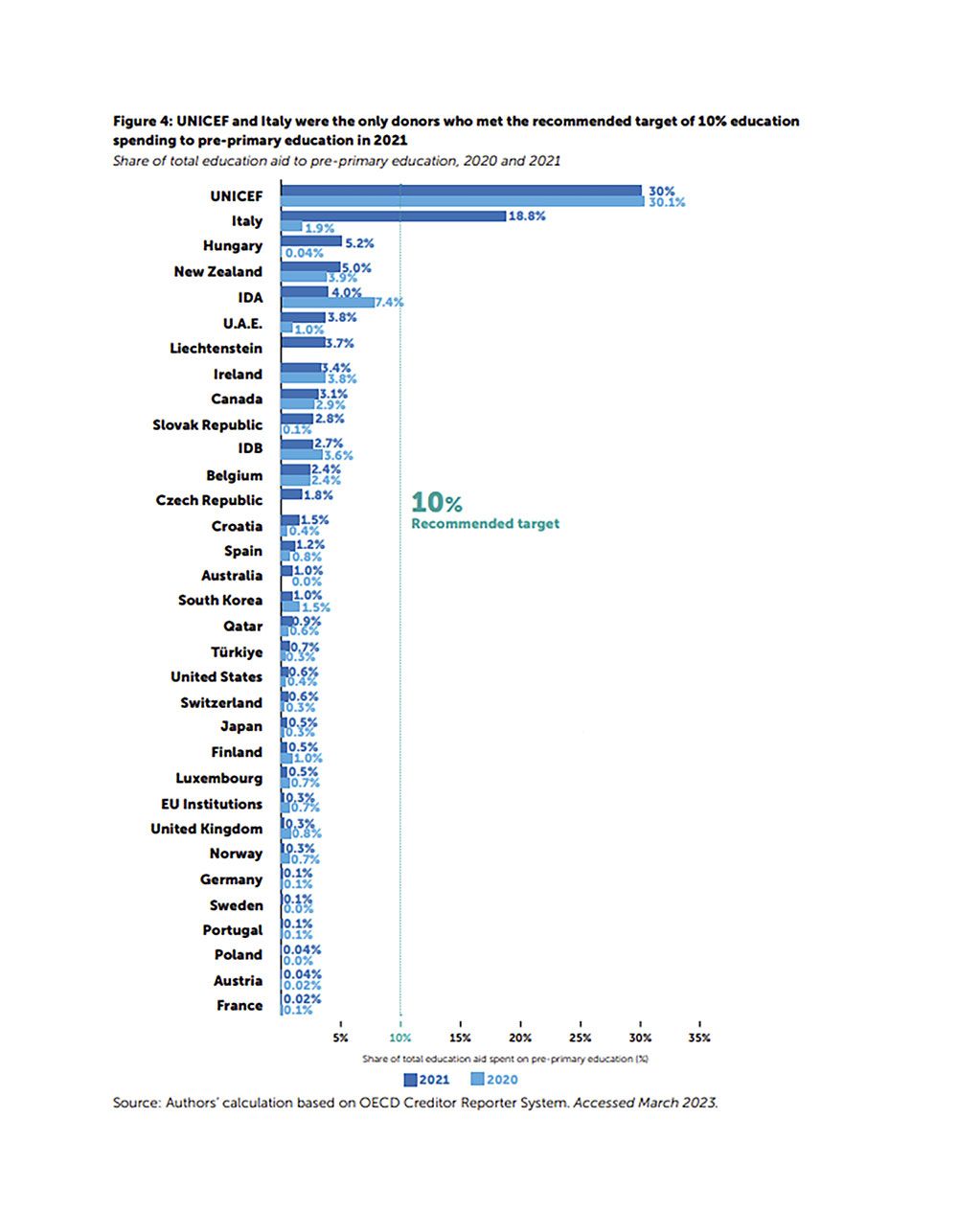

Pre-primary education “chronically” underfunded as richest nations drift further away from 10% aid goal

International aid for pre-primary education has fallen further behind an agreed 10% spending target since the COVID-19 outbreak, according to new research.
The report, compiled by academics at the University of Cambridge for the global children’s charity, Theirworld, highlights “continued, chronic” underfunding of pre-primary education in many of the world’s poorest nations, after years of slow progress and pandemic-related cuts.
Early childhood education is widely understood to be essential to children’s successful cognitive and social development and to breaking cycles of poverty in poorer countries. In 2017, Cambridge research for Theirworld resulted in UNICEF formally recommending that 10% of education aid should be allocated to pre-primary education. Last year 147 United Nations member states signed a declaration agreeing to the target.
According to the new report’s findings, aid spending is falling far short of this goal and any progress towards the target ground to a halt following the COVID-19 outbreak. The most recent figures, from 2021, indicate that the proportion of education aid spent on pre-primary education internationally during the pandemic dropped by approximately (US)$19.7 million: from 1.2% to 1.1%.
The report identifies several reasons for the decline, notably spending cuts by the World Bank’s International Development Association, EU Institutions, and by the governments of wealthy nations, such as the UK.
Professor Pauline Rose, Director of the Research for Equitable Access and Learning (REAL) Centre at the University of Cambridge’s Faculty of Education said: “Hundreds of millions of children around the world are missing out on high-quality pre-primary education despite clear evidence that prioritising this will improve their life chances. The overall trend is very worrying. Although some progress has been made towards the 10% target, it started from a very low base. Other education levels are still being prioritised amid a general decline in aid spending. International commitments to pre-primary education are good, but we need concrete action.”
Sarah Brown, Chair of Theirworld, said: “These new figures raise the alarm that the international community is missing its own targets, and moreover that investments in preschool and learning are being cut. The G20 made a promise five years ago to transform the investment in early childhood development. They urgently need to review and revitalise its commitments, as does the whole international community. For every child the early years are a once-in-a-lifetime opportunity. It’s our duty to ensure they are not wasted.”

"International commitments to pre-primary education are good, but we need concrete action."
The United Nations’ 2030 Sustainable Development Goals include the ambition to provide all children with proper childcare and pre-primary education. Over the past seven years, Theirworld and the REAL Centre have systematically monitored aid spending, tracking progress towards this goal. A 2017 report revealed most donors allocated less than 1% of their education aid to pre-primary, leading to the first calls for the 10% target, which has since received international support.
The new report was compiled using the Organisation for Economic Co-operation and Development’s creditor report system, which gathers information about the aid contributions of both individual countries and international agencies such as UNICEF and the World Bank. It shows that over the past two decades, the proportion of education aid spending that goes to pre-primary education has never exceeded 1.2%.
Between 2020 and 2021, spending on the sector dropped from $209 million to $189.3 million: a decrease of 9.4%, compared with a 6.9% fall in education aid overall and a 0.9% decline in total aid spending. In 2021, aid spending on post-secondary education – the vast majority of which never leaves donor countries – was 27 times higher than that spent on pre-primary, despite widespread acknowledgement of the need to invest in the early years.
The report nevertheless also shows that the 10% target is attainable. UNICEF, which has consistently prioritised pre-primary education, spent 30% of its education aid budget on the sector in 2021. Italy increased spending from $2.6 million to $38 million. The majority of this was allocated to the ‘National Strategy on Human Resource Development’ which focuses on supporting the Jordanian government in strengthening its education system.

"For every child the early years are a once-in-a-lifetime opportunity. It’s our duty to ensure they are not wasted"
The research shows that pre-primary aid is highly concentrated from a few donors, leaving early childhood development in poorer countries particularly vulnerable to sudden fluctuations in those donors’ spending.
Much of the pandemic-induced drop in spending, for instance, occurred because the World Bank cut its investment in pre-primary education from $122.8 million to $70.7 million. Other donors, such as Canada, EU Institutions, France, Norway and the UK, also reduced spending in this area. In 2021, eight of the top 35 education donors allocated no funds to pre-primary education at all.
The UK’s contribution was lacklustre for the world’s sixth largest economy, due in part to the Government’s controversial decision to reduce overall aid spending from the UN-recommend target of 0.7% of Gross National Income to 0.5%. Between 2020 and 2021, its education aid spending dropped from $703.67 million to $584.95 million. Aid to pre-primary was particularly badly hit, falling from an already low $5.6 million in 2020 to just $1.8 million in 2021, equivalent to a mere 0.3% of its reduced education aid budget.
The report also shows that pre-primary education spending tends to be focused on lower-middle income countries rather than the very poorest nations. In 2021, just 15% of aid in this area went to countries classified as “low income”, while 52.7% was allocated to lower-middle income countries.
As a result, some of the world’s least-advantaged children have little prospect of receiving pre-primary support. Eritrea and Sudan, for example, received no pre-primary education aid in 2021. In many other poorer countries – such as the Central African Republic, Chad, Niger and Syria – the amount of aid per primary school-aged child was less than $5.
Rose said the finding pointed to the need for a model of “progressive universalism”, where those most in need receive a greater proportion of aid spending. “The biggest gaps are in the poorest countries, and particularly among the very poorest and least advantaged,” she said. “Increasing spending on pre-primary alone will not be enough. We also have to make sure those in greatest need are prioritised.”
The full report is available on the Theirworld website.
Image in this story: Children in Idlib Governorate, Syria: one of the countries most seriously affected by the underfunding of pre-primary education. Ahmed Akacha, via Pexels.
Fig 2: Pre-primary education aid spending has remained a consistently low proportion of education aid spending. Aid to education by sub-sector, 2002 to 2021. Source: Authors’ calculation based on OECD Creditor Reporter System. Accessed March 2023.
Fig 4: UNICEF and Italy were the only donors who met the recommended target of 10% education spending to pre-primary education in 2021 Share of total education aid to pre-primary education, 2020 and 2021. Source: Authors’ calculation based on OECD Creditor Reporter System. Accessed March 2023.